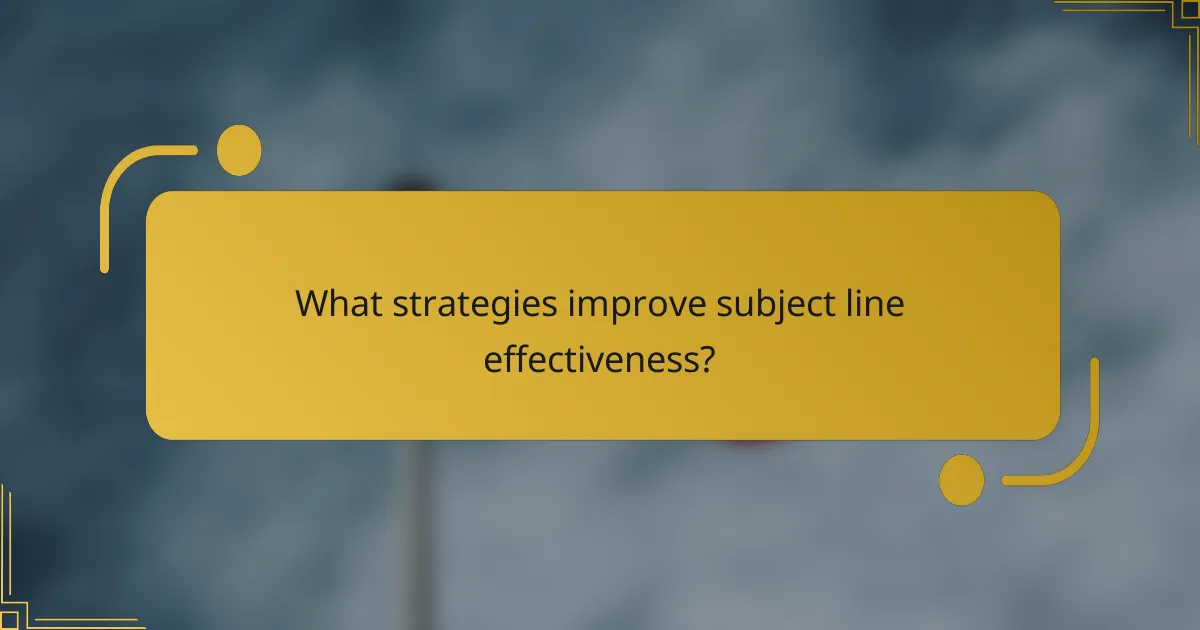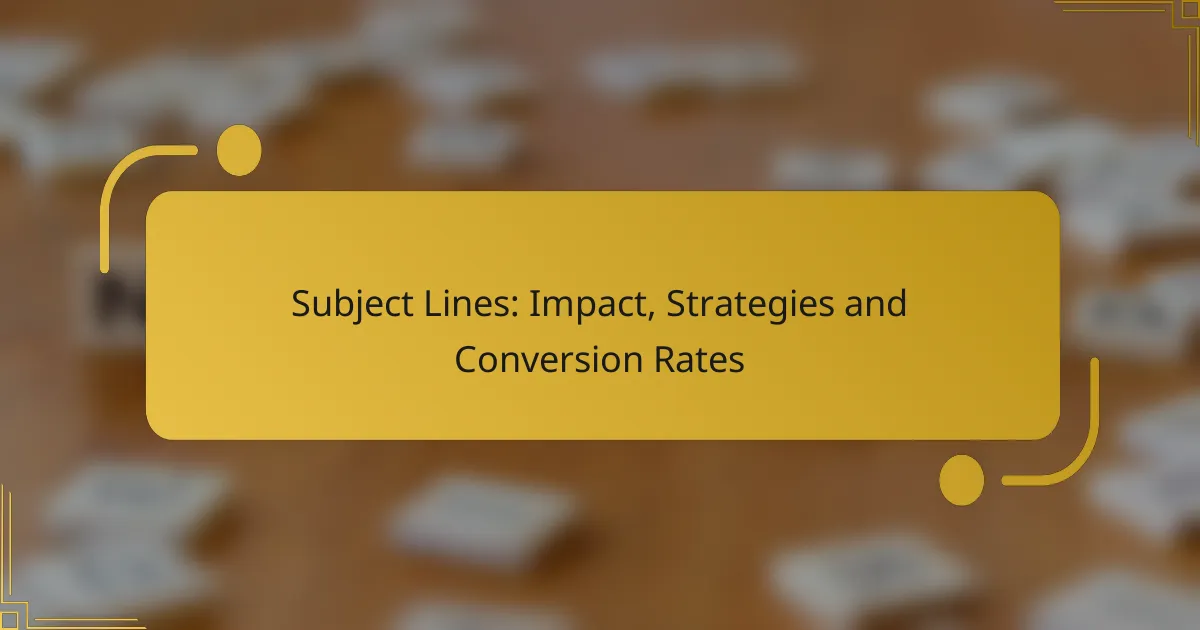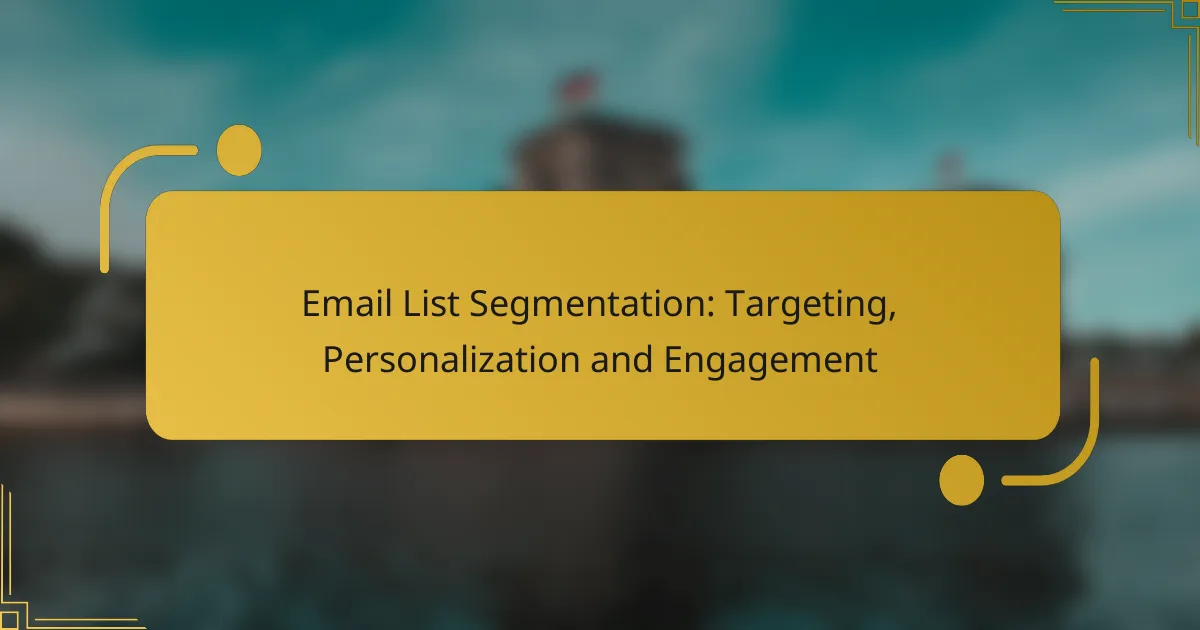Subject lines play a crucial role in determining the success of email marketing campaigns, as they directly impact open rates and engagement. By employing strategies such as personalization, urgency, and testing different formats, marketers can craft compelling subject lines that drive conversions. Styles that evoke curiosity or emotional responses often yield the best results, encouraging recipients to take action.

How do subject lines impact email conversion rates?
Subject lines significantly influence email conversion rates by determining whether recipients open the email and engage with its content. A compelling subject line can lead to higher open rates, improved click-through rates, and enhanced customer engagement, ultimately driving conversions.
Increased open rates
Effective subject lines are crucial for increasing open rates, as they serve as the first impression of your email. A well-crafted subject line can grab attention and entice recipients to click. Aim for clarity and relevance, using personalization or urgency to boost interest.
Consider testing different subject lines to see what resonates best with your audience. For instance, using a question or a bold statement can lead to higher engagement compared to generic phrases.
Improved click-through rates
Once an email is opened, the subject line’s impact continues by influencing click-through rates. A subject line that accurately reflects the email’s content encourages recipients to take action, such as clicking a link or making a purchase. Ensure that the subject line aligns with the email’s message to avoid disappointment.
Incorporating action-oriented language or highlighting a benefit can motivate recipients to engage further. For example, phrases like “Discover exclusive offers” can drive clicks more effectively than vague statements.
Enhanced customer engagement
Subject lines play a vital role in fostering customer engagement by setting the tone for the email’s content. Engaging subject lines can lead to higher interaction rates, such as replies or shares, which are essential for building relationships with your audience. Regularly updating your approach based on feedback can enhance this engagement.
Utilizing A/B testing can help identify which subject lines resonate most with your audience, allowing you to refine your strategy over time. Remember to keep your subject lines concise and relevant to maintain interest and encourage ongoing communication.

What strategies improve subject line effectiveness?
Effective subject lines can significantly boost email open rates and conversions. Key strategies include personalization, creating a sense of urgency, and testing various formats to determine what resonates best with your audience.
Personalization techniques
Personalization techniques involve tailoring subject lines to individual recipients based on their preferences, behaviors, or demographics. Using the recipient’s name or referencing past purchases can create a connection that encourages opens.
Consider segmenting your email list to send targeted messages. For example, a subject line like “John, your favorite shoes are on sale!” is more engaging than a generic offer. Aim for a balance between personalization and relevance to avoid appearing spammy.
Use of urgency and scarcity
Creating urgency and scarcity in subject lines can prompt immediate action from recipients. Phrases like “Limited time offer” or “Only a few left in stock” can encourage readers to open the email quickly to avoid missing out.
Be cautious not to overuse these tactics, as they can lose effectiveness if perceived as manipulative. A good practice is to reserve urgency for genuine promotions, ensuring that your audience feels the urgency is warranted.
Testing different formats
Testing different formats is essential for discovering what works best for your audience. Experiment with various lengths, styles, and tones in your subject lines to see which combinations yield higher open rates.
For example, try A/B testing a question format like “Are you ready for summer?” against a statement format like “Get ready for summer with our new collection.” Analyze the results to refine your approach continually and optimize engagement.

Which subject line styles yield the highest conversions?
Subject line styles that yield the highest conversions often include question-based formats, numbered lists, and those that evoke emotional triggers. These styles engage readers effectively, prompting them to open emails and take action.
Question-based subject lines
Question-based subject lines are effective because they pique curiosity and encourage readers to seek answers. For instance, a subject line like “Are you making these common marketing mistakes?” invites the recipient to reflect on their practices.
To maximize their impact, keep questions relevant to your audience’s interests and pain points. Aim for clarity and brevity, ensuring the question is easy to understand at a glance.
Numbered lists in subject lines
Numbered lists in subject lines provide a clear structure and set expectations for the content. Subject lines like “5 Tips for Boosting Your Productivity” can attract attention by promising concise, actionable information.
When using this style, consider using numbers that suggest a manageable amount of information, typically between three and ten. This approach can help recipients feel that the content is digestible and worth their time.
Emotional triggers
Emotional triggers in subject lines tap into the reader’s feelings, making them more likely to engage. Phrases that evoke urgency, excitement, or fear of missing out (FOMO) can significantly enhance open rates. For example, “Last Chance: Save 30% on Your Favorite Items!” creates a sense of urgency.
To effectively use emotional triggers, identify the emotions that resonate with your target audience. Ensure that the subject line aligns with the email’s content to maintain trust and avoid disappointment.

What are the best practices for crafting subject lines?
Effective subject lines are crucial for increasing open rates and engagement in email marketing. Best practices include keeping them concise, using clear language, and incorporating relevant keywords to capture the recipient’s attention.
Keep it concise
Concise subject lines typically perform better, as they are easier to read quickly. Aim for around 6 to 10 words, ensuring that the main message is clear without unnecessary fluff.
Short subject lines can help avoid truncation in inbox previews, especially on mobile devices. Test different lengths to find what resonates best with your audience.
Use clear language
Clarity is key when crafting subject lines. Use straightforward language that accurately reflects the content of the email, avoiding jargon or overly complex terms.
Consider the audience’s familiarity with your brand and tailor the language accordingly. A clear subject line sets the right expectations and builds trust with the recipient.
Incorporate relevant keywords
Including relevant keywords in your subject lines can enhance visibility and relevance. Think about what terms your audience might search for or find appealing.
Use keywords that align with the email’s content and the interests of your target demographic. This practice not only improves open rates but also helps in segmenting your audience effectively.

How can A/B testing enhance subject line performance?
A/B testing can significantly improve subject line performance by allowing marketers to compare different versions and identify which one resonates better with their audience. By systematically testing variations, businesses can optimize open rates and increase engagement with their email campaigns.
Identifying winning subject lines
To identify winning subject lines, create two or more variations of your subject line and send them to a small segment of your email list. Measure the open rates and engagement metrics to determine which version performs best. This approach helps in making data-driven decisions rather than relying on assumptions.
For example, you might test a subject line that emphasizes urgency against one that highlights a benefit. Analyzing the results will guide you in selecting the most effective option for your broader audience.
Understanding audience preferences
Understanding audience preferences is crucial for effective A/B testing. Different segments of your audience may respond differently to various styles, tones, or content in subject lines. Tailoring your tests to reflect these preferences can enhance the relevance of your messaging.
Consider demographics, past engagement behavior, and feedback to shape your subject line variations. For instance, younger audiences might prefer playful language, while professionals may respond better to straightforward, informative subject lines.
Adapting strategies based on data
Once you have gathered data from your A/B tests, adapt your email marketing strategies accordingly. Analyze the winning subject lines and apply the insights to future campaigns, ensuring continuous improvement in your approach. This iterative process helps refine your messaging over time.
Additionally, keep track of changing trends and audience feedback to stay relevant. Regularly revisiting and adjusting your subject line strategies based on performance data will help maintain high engagement levels and conversion rates.


